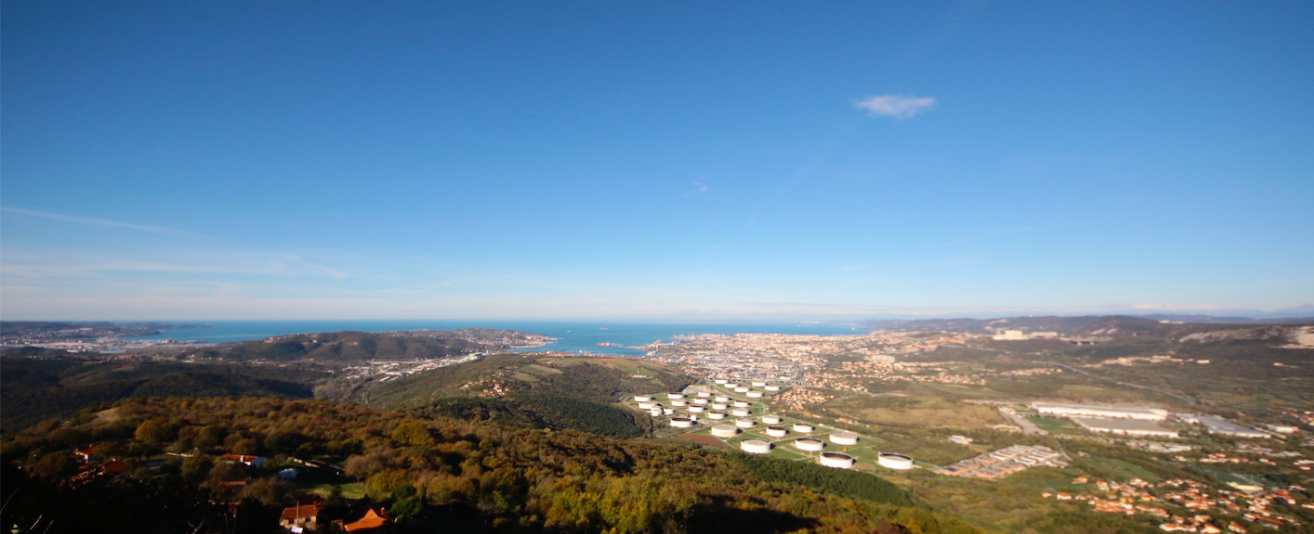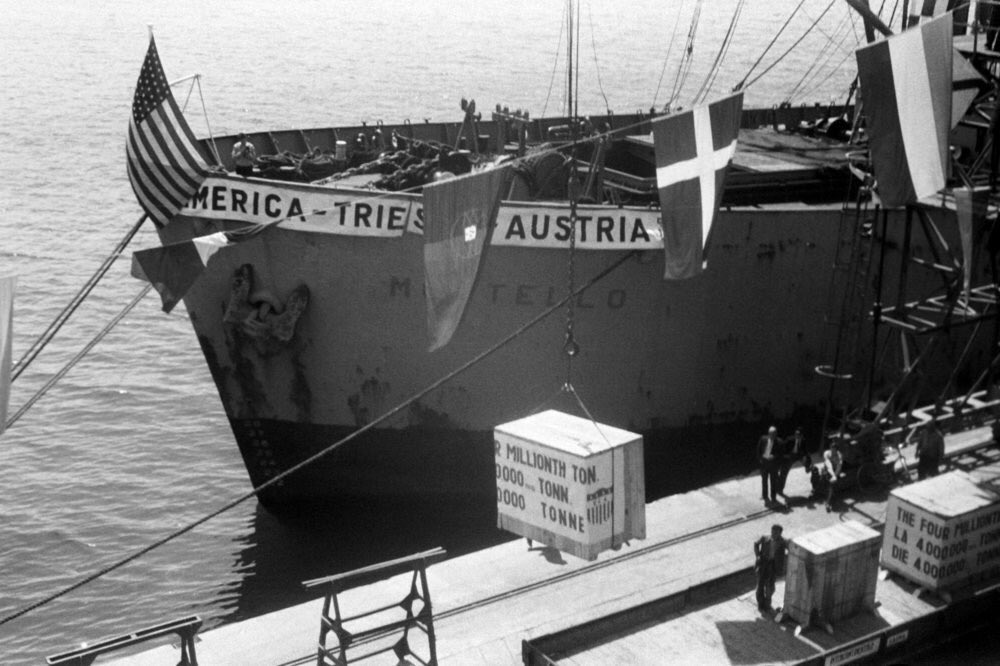QUESTION TRIESTE – 5 October 2011

The Free Territory of Trieste and its international Free Port (Photo: Roberto Giurastante).
Question Trieste is about a city North to the peninsula of Istria. Here the Adriatic Sea wedges in the heart of Europe, stretching as far as the southmost cape of the Julian Alps. This is Trieste.
Trieste is a city and port with its own unique history, traditions and legal status. For 536 years it was a fundamental part of the Habsburg Empire, its main maritime emporium, one of the top ports in the world until 1914.
Then, in the tragical November 1918, after Austria-Hungary’s dissolution, after the arrival of pre-fascist Italy, Trieste fell. Rampant economic and social ruin, discrimination, and misery.
From September 1943 to May 1945 Trieste was annexed to the German Reich. In 1947 the Italian Peace Treaty made it the capital city of a new independent State: the Free Territory of Trieste – FTT.
September 15th, 1947 is Trieste’s independence day.
As Europe was still to raise from the war’s ashes, a new, independent State was born.
The Free Territory exists because of its strategic Free Port, pillar for European Reconstruction. Thanks to its Free Port, even a state as small as Trieste contributed to the rebirth of war-torn Europe.

“America – Trieste – Austria”.
From 1947 to 1954, Trieste and its international Port enjoyed freedom from the previous, suffocating Italian control.
Trieste’s first Government, the Allied Military Government of the Free Territory of Trieste (A.M.G. F.T.T.) re-connected Trieste and Central Europe. The wound inflicted in 1918, when Trieste was torn from Mitteleuropa for the sake of post-WWI politics was finally healing.
During the British-US administration, Trieste proved that its strategic geographic position, combined with its new, unique international Free Port status, could break all past records in term of maritime trade and traffics. Despite being Europe’s youngest State, Trieste had a bright future ahead.
At least until 1954, when Trieste’s temporary civil administration was sub-entrusted to the administration of the Italian Government. This time, for the sake of the Cold War era realpolitik.
The Italian Government’s duty was continuing the good British-US administration of the A.M.G. F.T.T. pursuant to the Memorandum of Understanding regarding the Free Territory of Trieste. However, the officers of the new administering Government would rather ransack the independent State.
The old, revived structures of the Fascist regime gained control of all public offices.
Raging nationalism drove about 40,000 Triestines to emigrate, and attracted immigrants from Italy. The generation that should have developed the new, independent State left. This was factual ethnic cleansing. However, none of the international guarantors of the 1947 Peace Treaty took action to prevent it. One more price to pay to ease the dangerous Cold War-era tensions.
In 1975, Italy and Yugoslavia signed a political bilateral agreement, consolidating their simulation of sovereignty over Trieste’s then two administration zones.
In truth, a bilateral agreement cannot amend a multilateral international treaty. The United Nations confirmed it in the 1980s, so did the US Department of State.
Right now, as Italy favors its own ports, Trieste’s port traffics are collapsing. The city is little more than a fuel hub, its free port regime is underused, illegally suspended. Local politicians want to get rid of it altogether.
Trieste’s territory is now a State landfill. A sad destiny indeed for a nation born to be a cores of worldwide economic development. To Italy, Trieste is an empty symbol of the violent, forceful Italian unification. A unity for the sake of politics, undesired by the people.
Trieste’s history repeats. But the rules-based international order stands.
The Cold War is over. After Yugoslavia’s dissolutive crisis, former “zone B” of the Free Territory is a part of Slovenia and of Croatia. All UN Member States recognize it, with 6 Resolutions.
It is time for history to return.
The 1947 Italian Peace Treaty is in force. So is the UNSC Resolution about the present-day Free Territory of Trieste, its international Free Port, and its free zones.
In this era, this is Europe’s most attractive resource for international trade and enterprises. Trieste can become the European Singapore. All it takes to enjoy is re-establishing the rule of law. The only obstacle still standing is the local nationalistic establishment.
Trieste can become the engine for Central Europe’s development, and beyond.
Under the 1947 Peace Treaty, the Free Territory has its own monetary system (art. 30, Annex VI), its own laws, legal system, and judiciary.
The UN Charter grants the rights and fundamental freedoms of Trieste’s citizens. Including the right to a fair trial (art. 4, Annex VI) under Triestine law, not under Italian laws. Unless the Italian temporary civil authorities properly extends such laws to Trieste.
The Free Territory is exempt from the payment of the Italian public debt (art. 5, Annex X). Also. being its own State, it has the rights to its own taxes, its own budget, separated from bordering Italy’s, and its own economic system. No foreign country can collect taxes or take away the properties of Trieste’s people, or Trieste’s own State properties.
Same goes for the incomes from Trieste’s international Free Port. Currently, several billions end up in Rome’s coffins every year. This is illegal. Even under Italian law.
Again, the only obstacle to the Free State’s freedom is the local nationalistic establishment.
Finally, Trieste’s people are claiming their legitimate rights.
The only answer to Question Trieste is legality.
Translated from blog “Environment and Legality” by Roberto Giurastante
